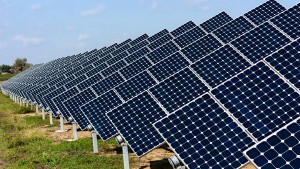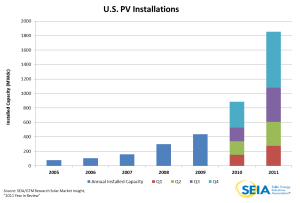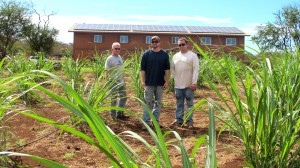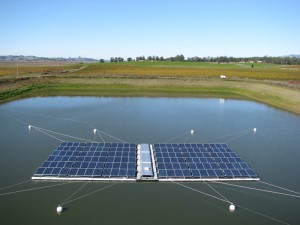BLOG ENTRY: Solar Power Projects Worldwide
BLOG ENTRY: Solar Power Projects Worldwide
Often discussed as one of the pathways out of the global climate crisis, solar power has had mixed success worldwide. Deployment is moving swiftly in the United States and China, while investment in the source has essentially collapsed in some countries such as Japan. Despite years of debate over tax credits and the need for development of more energy storage technologies, solar power is still rapidly growing as a source of electricity for the global economy.
Beginning with an overview of the two different forms these energy projects are under, they center around either solar thermal collectors or photovoltaic cells. The latter is more complicated and has been the subject of more intense research in recent years. The collection of thermal radiation involves the use of a fluid passing through a heat sink, which is exposed to sunlight. This can be used as a heat source, or can be concentrated in a turbine to generate energy. Photovoltaic cells use semiconductors to convert protons to electrons, which then generates energy.
Furthermore, photovoltaic systems are becoming more popular. The silicon solar cell was initially developed in the 1950s. While initially being very expensive, development has been continuous and more affordable options are now available. Unfortunately, this has led to less efficiency on some of the systems. A simple diagram of a photovoltaic system is shown below.
In the US, solar energy has played a minor role since the advent of industrialization. It provides three tenths of 1% of energy consumed in the United States. Deployment has rapidly grown in recent years, with support of the government. Capacity has increased from around 330 megawatts in 1997 to over 6,000 in 2013.
The main drawback to solar power deployment has been a lack of constant supply and reliability. Changing positions relative to the sun, and atmospheric conditions, have led to concerns about the stability of solar power. Furthermore, a significant amount of energy is lost as it is transported through power lines. The cost of the technology for solar power, relative to the energy produced, makes the source expensive when compared to other alternatives. As highlighted in the class text, a typical system for a single residence carry about a 3-5 kW capacity. The cost runs as high as $8,000 per kW, bringing the cost beyond $40,000.
This doesn’t leave solar power without its believers. A key American project is taking hold with a high-profile corporate backer! Google is investing to convert an old oil field into a solar power plant. They are providing about $145 million dollars in financing, so SunEdison can build the plant. Google has been a strong backer of renewable energy in the past, and the plant will be able to power 10,000 homes. It will be the 17th renewable energy project that Google has invested in, underscoring the importance of partnerships between different private firms to increase deployment of solar power.
Projects like these has pushed solar power to the level of being able to power more than 2 million American homes. There were 140,000 new solar power installations in the country in 2013.
The graph above underscores the increase in American solar capacity in recent years.
Looking away from the mainland US to Hawaii, a solar-powered vodka distillery has caught the attention of the web. The vodka is distilled from sugar cane and blended with deep ocean minerals from the depth of 3,000 feet off the coast. The entire operation is powered by a 61.2kW solar PV array. According to the company, 100 percent of their power comes from solar power and relies on lithium ferrous phosphate batteries.
The project has been used by solar power advocates to point to what is possible at a larger scale, given greater investment in the energy source. Environmentalists underscore the broad, 360-degree approach at environmental protection within the context of solar energy. The distillery is able to generate power without the destruction of a broad area of forest, and is concurrently limiting carbon output.
Lastly, the final project I’ll be analyzing is across the world in India. The country is planning the world’s first floating solar power project. India’s leading hydropower generator, National Hydro Power Corporation, is planning to set up a 50 MW solar photovoltaic project, which will be over bodies of water. The cost of the project will be around $70 million dollars. The floating solar power plant technology was developed by a team led by SP Gon Choadhury. There are hopes that this project will provide a template for future floating solar power plants in the future.
While solar power provides a small portion of the American and global energy supply, its growth is noteworthy and likely to continue. With continued cooperation between different stakeholders, and the advancement of deployment technologies, the energy source will likely be seen as a more viable alternative in the future.
References:
http://www.renewableenergyworld.com/rea/blog/post/2013/11/top-five-cool-renewable-energy-projects
http://www.huffingtonpost.com/2014/09/10/google-solar-power_n_5796580.html
http://instituteforenergyresearch.org/topics/encyclopedia/solar/
http://www.seia.org/research-resources/major-solar-projects-list
http://www.seia.org/research-resources/solar-industry-data
http://cleantechnica.com/2014/07/02/india-plans-worlds-largest-floating-solar-power-project-50-mw/






One Response to BLOG ENTRY: Solar Power Projects Worldwide